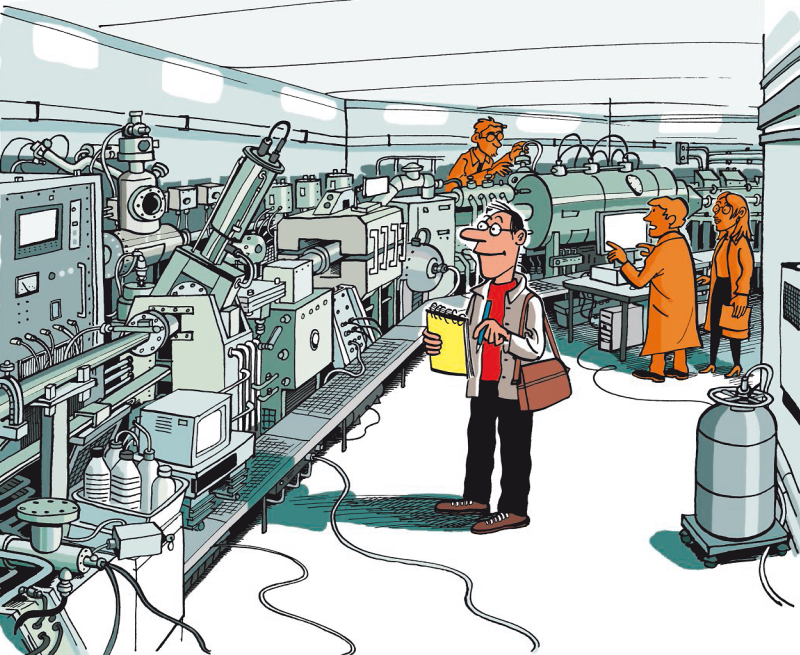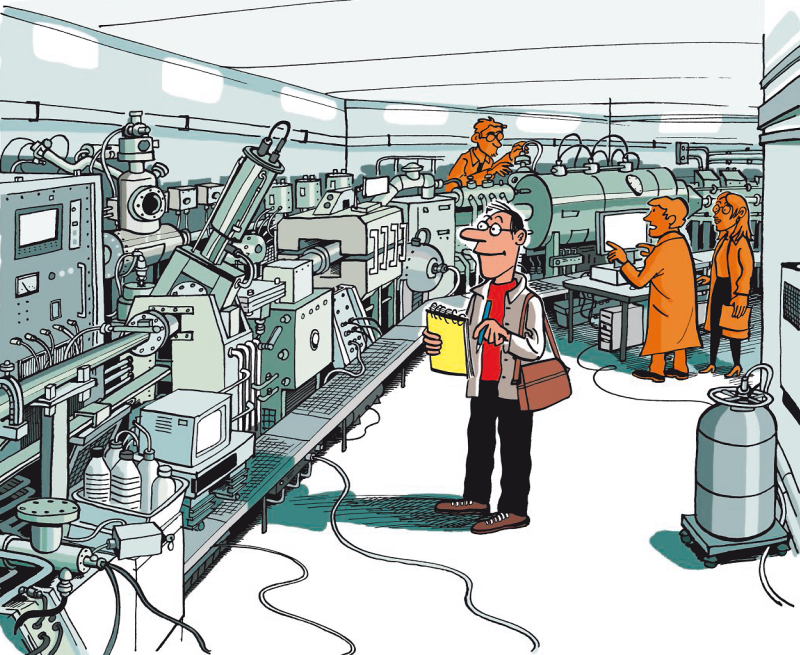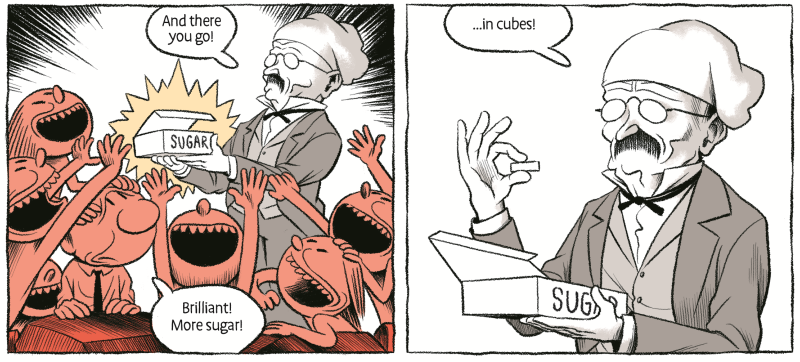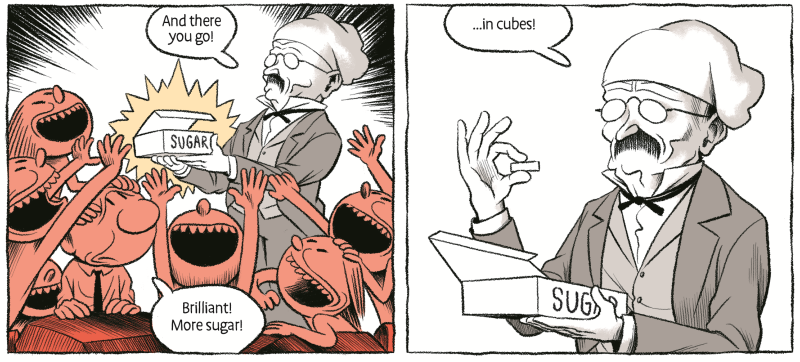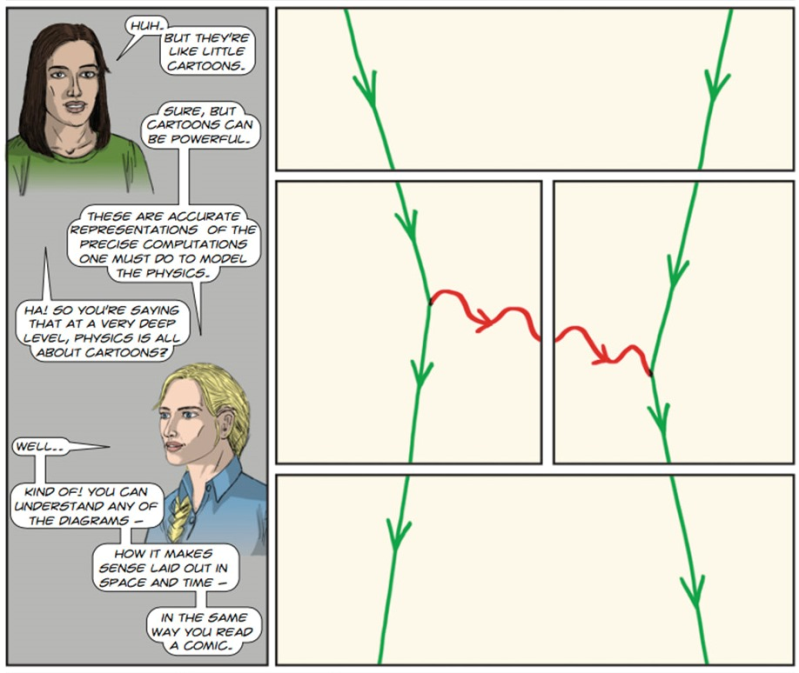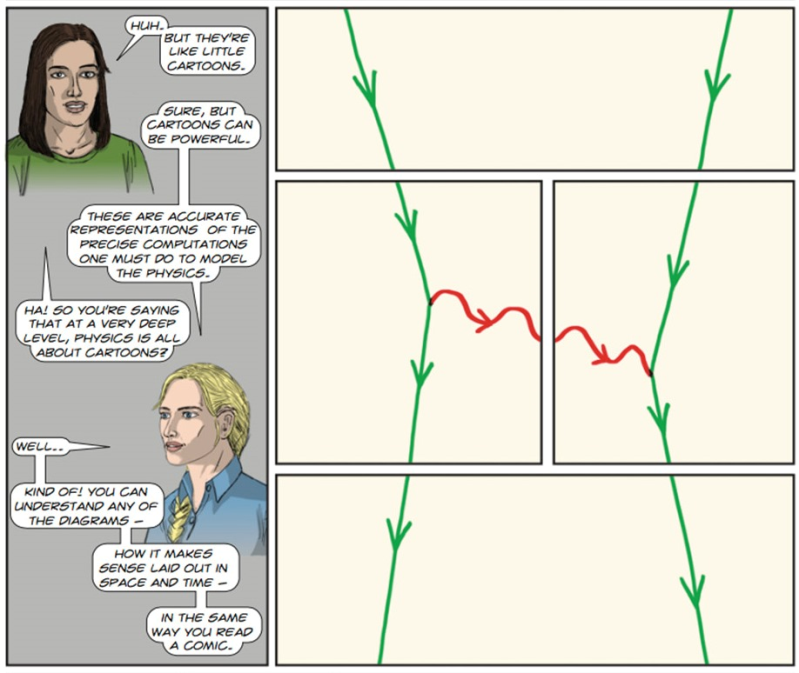Arts & Culture: Science in Comic Books
The comic strip is a sophisticated genre in France, where the “bande dessinée” is considered the ninth art by art historians. Many French comics are conceived for adult audiences and have political or historical themes. So it’s perhaps no surprise that science-based comics have a special place here—the French delegation at CERN had a “cartoonist in residence” for several years, and one of 2017’s top-selling books was a comic-style biography of the French astronaut Thomas Pesquet. In May, “superheroes” of the science-comics universe assembled in Angoulême, France—the French capital of comics—for the 2nd Telling Science, Drawing Science (TSDS) conference. Over 100 scientists, artists, and educators gathered to share their experiences and to look for new ideas in how to illustrate science stories.
“The comic strip is a storytelling art,” says Pierre-Laurent Daures, one of the TSDS organizers and the president of Stimuli, an association that directs artist-scientist collaborations. The typical comic contains characters whose experiences are captured in a time-ordered sequence of panels. Scientific findings, by contrast, are usually presented as objective, timeless facts—with rarely any story behind them. “Combining scientific knowledge with comic drawing is a challenge, but it can lead to innovative solutions for communicating science,” Daures says.
These “solutions” were on show at the conference. In the entrance of the Museum of Comic Strips—where TSDS was held—several graduate students displayed comic-strip versions of their Ph.D. theses that were made for university-sponsored outreach programs. In talks, researchers from France, Morocco, and Chile presented a number of science-based comic books, such as one that used Alice in Wonderland to explain elementary statistics.
When it’s done well, a comic draws the reader in, keeping her hooked until the end. A key aspect for science communication, therefore, is carefully weaving science concepts into the fabric of the story. “What we see is that the more that scientific knowledge contributes to the structure of the plot, the more approachable the science becomes,” says TSDS head organizer Cécile de Hosson from LDAR, a math and science education research center in Paris. She notes that people often pick up comic books to laugh or to be entertained. If a science-based comic doesn’t disappoint those expectations, then it offers an effective vehicle for delivering scientific knowledge, she says.
That effectiveness is perhaps most evident when a science comic takes a dry, abstract concept and breathes life into it with humor or a clever visual construction. In Le Mystère du Monde Quantique—a 2018 comic book by physicist Thibault Damour at the Institute of Advanced Scientific Studies (IHÉS) in Bures-sur-Yvette, France, and artist Mathieu Burniat—a cartoon version of Max Planck explains the meaning of his eponymous constant while making crêpes for a group of children. Rather than pour sugar on each crêpe, cartoon Planck passes out sugar cubes, which represent quantized packets of energy.
Another communication strategy employed by comics is incorporating nonexperts into the story. This possibility was explored by physicist Clifford Johnson at the University of Southern California in his 2017 graphic novel The Dialogues. In the book, characters discuss physics topics like black holes and the multiverse in ordinary settings, such as onboard a train or in a coffee shop. The everyday conversations draw readers in. “It encourages readers to see themselves as potential participants too,” Johnson says.
Johnson made his own drawings for the novel, taking advantage of the many tools offered by the comic-book format. “You can have several layers of visuals—realistic, abstract, metaphorical, literal, as well as text—all working on the same page at the same time,” he says. He used this method to explain how the “little cartoons” of Feynman diagrams map out particle interactions. On one side of the page, two characters discuss how Feynman diagrams work. On the other side, Johnson displays an example diagram, which is split between different panels that essentially break it into its narrative elements of two particles coming together, interacting, and then exiting the scene.
Comics can also play around with space and time in ways that are hard—or impossible—in other communication formats. In his TSDS talk, astrophysicist Roland Lehoucq from the Atomic Energy Commission (CEA) in Saclay, France, presented several illustrations in which artists have used the unique spacetime features afforded by comic strips. In one example, a character in the top panel of a page “spies” on the bottom panel—figuratively seeing into the future and messing with causality. In another example, a person reaches into a neighboring panel—the comic-book equivalent of spooky action as a distance. The pages of a comic can also contain cutouts that act like “wormholes” in spacetime, allowing the reader to look through an extra dimension, Lehoucq says.
While scientists like Johnson and Damour are involved in comic making, most science-based comic creators are not scientists by training. Jean-Yves Duhoo, for example, is an artist who worked on a comic-strip series called Le Labo that appeared in the Franco-Belgian comic magazine Spirou. For each installment, Duhoo visited a different research site, including the Paris Observatory and the synchrotron facility in Saclay. Duhoo documented his visits with photos, but when it came to drawing, he worked completely from memory. “I wanted to capture my impression of the place,” he says. If a machine seemed big, or if a lab felt cluttered, he conveyed that in his illustrations.
In this way, artists like Duhoo may have an advantage in that they are entering the world of the scientist with just a pencil, a pad, and their imagination. “The comic strip has a format that lets us ask scientific questions differently,” Daures says. When an astronomer states that the Earth turns around the Sun, for example, the artist responds with new questions, such as how big should the two bodies be drawn? And from what vantage point should we observe the motion? “The act of drawing forces us to re-examine how we know something,” Daures says.
–Michael Schirber
Michael Schirber is a Corresponding Editor for Physics based in Lyon, France.
Correction (18 June 2019): The article was corrected to clarify that the magazine Spirou is Franco-Belgian.



